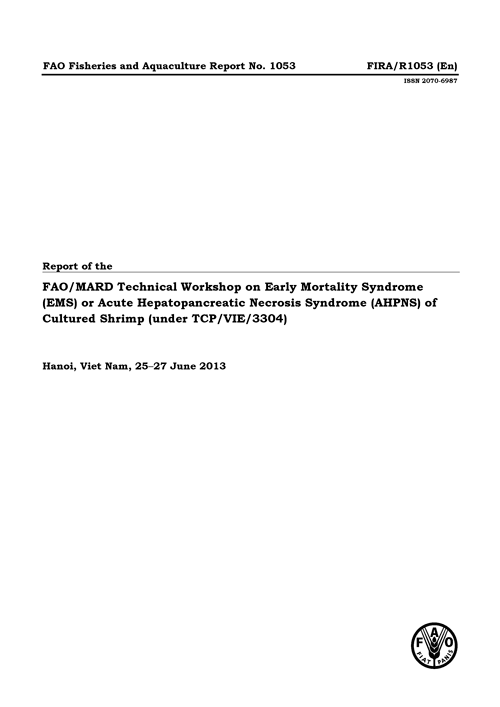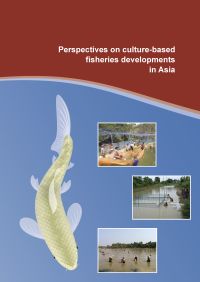FAO / MARD Technical Workshop on Early Mortality Syndrome or Acute Hepatopancreatic Necrosis Syndrome of Cultured Shrimp
30 September 2013 | 2775 Downloads | .pdf | 4.66 MB | China, Health and Biosecurity, Indonesia, Malaysia, Shrimp, Thailand, Vietnam
Under the auspices of the FAO TCP/VIE/3304 (E) Emergency assistance to control the spread of an unknown disease affecting shrimps, being implemented by Vietnam’s Ministry of Agriculture and Rural Development (MARD), the FAO/MARD Technical Workshop on “Early Mortality Syndrome (EMS) or Acute Hepatopancreatic Necrosis Syndrome (AHPNS) of Cultured Shrimp” held in Hanoi, Viet Nam from 25 to 27 June 2013 was attended by 63 experts and shrimp aquaculture stakeholders from public and private sectors.
The workshop participants were informed of: (i) relevant findings and outcomes of the work carried out under TCP/VIE/3304 project and (ii) updates on EMS/AHPNS situation and experiences in affected Asian countries. To assist in further understanding this disease in terms of its aetiology additional technical presentations from other experts were given. Nineteen technical presentations provided the basis for discussions on actions and measures to reduce the risk of EMS/AHPNS.
The workshop recognised that complacency in the shrimp aquaculture sector resulting in that laxity, during a period of relatively trouble-free shrimp production, led to vulnerability of the sector to any newly emerging pathogen that might arise unexpectedly, as is the case of EMS/AHPNS. Poor management practices, weak compliance with standard, good biosecurity and good aquaculture practices both at farm and hatchery facilities were evident. It is now clear that shrimp aquaculture needs to improve and continue to develop into a sector that implements responsible and science-based farming practices. With the current understanding that EMS/AHPNS has a bacterial aetiology, a strain of Vibrio parahaemolyticus, the Workshop recommended that a proper name be now given to EMS/AHPNS, i.e. acute hepatopancreatic necrosis disease (AHPND).
The workshop drew a number of recommendations on specific and generic actions and measures for reducing the risk of AHPND, directed to wider shrimp aquaculture stakeholders (public and private sectors) pertinent to important areas such as: AHPND diagnosis; AHPND notification/reporting; international trade of live shrimp, shrimp products (frozen, cooked), and live feed for shrimp; advice to countries affected and not affected by AHPND; measures at farm and hatchery facilities; advice to pharmaceutical and feed companies and shrimp producers; actions on knowledge and capacity development; AHPND outbreak investigation/emergency response; and specific AHPND-targeted research on various themes (i.e. epidemiology, diagnostics, pathogenicity and virulence, public health, mixed infections, non-antimicrobial control measures, environment, polyculture technologies).
Copyright, all rights reserved.

